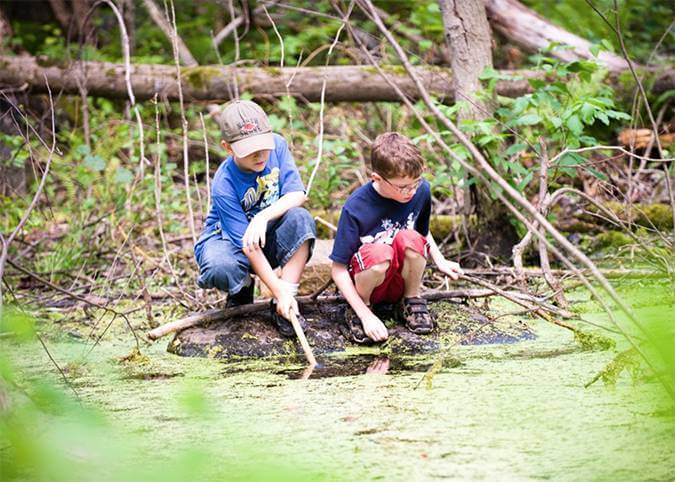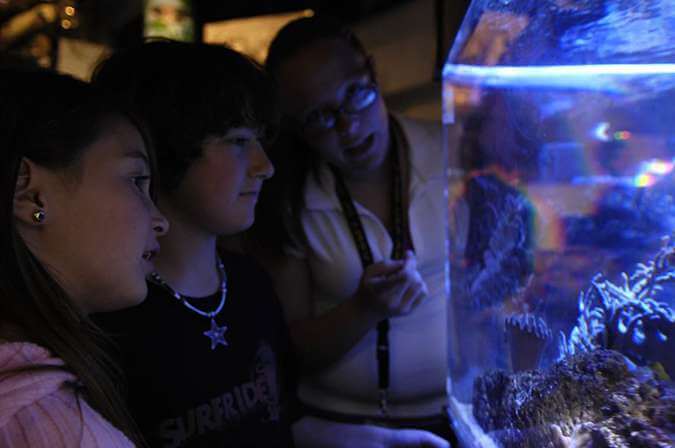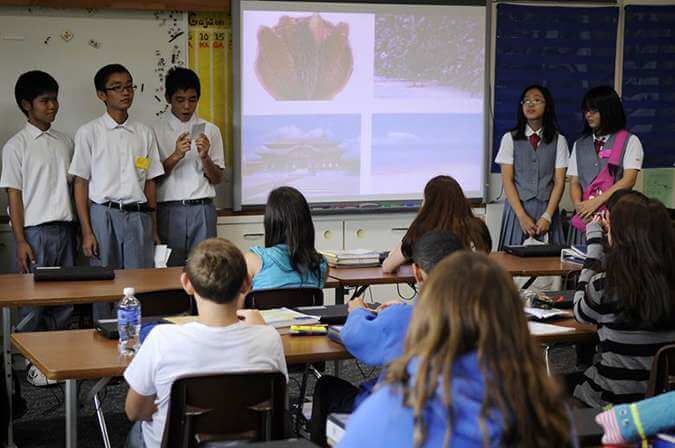Part 2, “Why even try?” was published in Tipping Points on March 13th, 2018.
I work in two worlds.
In one, I am part of the team at Ingenuity Hub: Personalized Learning Collaborative, a Self-Directed Education center for teens who need an alternative to standardized curriculum and conventional schooling.
In the other, I am a full-time English teacher in one of those standardized, conventional schools.
My journey to discover, understand and facilitate Self-Directed Education has brought me to the conclusion that every child deserves access to it. I have seen and felt the transformative impact that freedom, even just the notion of freedom, has on young people – and on me.

This approach to learning has resurrected the hopes I had about being a teacher when I first became one 25 years ago. I always wanted to create a learning environment that tapped into each kid’s interests and built on their natural curiosity. The structure and spirit of conventional schooling has a way of discouraging those efforts, and many teachers move inexorably toward coercive techniques. Carrot-and-stick approaches are the default: “Do what I say, how I say to do it, when I tell you to do it. If you do, I will reward you with grades. If you do not, I will punish you with grades – and detentions, calls to your parents, and shame.”
Self-Directed Education brought me back to my earliest reasons for becoming an educator. I see kids every day confronting questions like, “What do I want and need to learn?” I talk with students about the “Why” of learning all the time, and I get to work with them as they decide for themselves the reasons for learning what they decide to learn. Overall, the discussion goes back to the big questions of, “What kind of life do I want to live now and in the future?” and “What do I need to learn in order to live that kind of life?” Just within the past week, I have had the pleasure of experiencing novels students are drafting, computer code they are writing for real clients they have, websites they have designed, games they are playing together, and even companies they have legally registered and launched.
These experiences inspired me to do everything I can to make Self-Directed Education available to students who attend the conventional high school where I have worked for the past 12 years. This series of essays documents my efforts to do so.
As things stand right now, it may be a very short series of essays.
The conventional education system is built on the idea that youth are incapable of learning on their own, or even figuring out for themselves what they should be learning.. Every aspect of the system is designed to control and coerce them to do what they are told, when, where and how they are told to do it. An ideal of the system is “gradual release of responsibility for learning,” as if responsibility for learning were something adults can withhold or control. The entire history of this system is a force that works to conform every stakeholder to the idea that kids are dependent on it. That force often slowly grinds down any effort to create alternatives to coercive schooling.
Around March of 2013, a student in my Speech class suggested I watch a viral YouTube video about something called The Independent Project. The program was a full-day, school-within-a-school designed by and for high school students at Monument Mountain Regional High School in Great Barrington, MA – in our own state! Students in The Independent Project did not attend traditional classes. Instead, they pursued weekly and semester-long projects based on their interests, identified how those projects developed skills in math, science, social studies and English language arts, and collaborated on community-service projects.
He and a group of other students in that class decided we should try to start a similar program at our high school. We wrote a short proposal and delivered it to our school’s principal. The principal was receptive, but countered that it was so late in the year, we wouldn’t be able to get approval for the following year for a full-day, school-within-a-school program like The Independent Project. Instead, he suggested that we sneak the program in for the following year by making it one period in the day, and asked if I would be willing to run the class in addition to my full teaching load. He said if we could show this kind of program was beneficial to students, then we could present it the the school committee the following year and request expanding it. I was appreciative of his support, and believed his offer was the best we could do, so I agreed.
In the pilot year of the program, 2013-2014, students learned Japanese, created artwork, studied comparative religion, analyzed literature, explored healthy diets, and researched statistics. (These students, by the way, have gone on to careers in linguistics, photography, education, sports management, and healthcare.) Near the end of that year, our school district hired a new superintendent, and our school principal suggested we wait one more year to establish the program more. He offered to put the The Independent Project into my schedule as a regular class, but insisted we would need to run it as a one-period-a-day course for one more year before we could try to expand it into the full-day, school-within-a-school program it was designed to be. Again, aware of how difficult change is in the conventional school system, and grateful still for our principal’s support, I agreed to his offer for gradual, slow growth.
In 2014-2015, our district’s new superintendent and the high school principal butt heads over the direction the school should take. Our principal resigned, and accepted a position at another high school in a different district. All plans were put on hold, including our ability to grow The Independent Project at our school. Before our principal left, he made sure that the program was still in the schedule, and in 2015-2016, I had another section of The Independent Project, but the students and I were definitely discouraged. We would have to wait another year, and with the uncertainty around our future leadership for our school, we could not help but feel betrayed.
The superintendent named an interim principal for the following year, a woman who had been an elementary school administrator in our district. During her interim year, she canceled The Independent Project without ever visiting the class or speaking with me or the students in the program. She didn’t even inform me of her decision. I found out when I was given my teaching schedule for the following year and discovered The Independent Project was not on it.
If this is difficult to read or follow, trust me, it is more difficult for me to write. I almost resigned that day.

A glimmer of hope returned when a new permanent principal was announced. During the last month of school before he came on board officially, and while the interim principal was still serving, he visited the building. An announcement was made that he would be in the school’s media center the whole day, and anyone who wanted to meet him could do so there. The students in The Independent Project suggested we go talk to him. I told them they should go talk to him, and they left.
Fifteen minutes later, he walked into my classroom with the kids. “What is this program? Sounds amazing. I’ve never heard of anything like this before in a public school.”
That is how I met our new principal. He immediately became a fan of our program, and I am convinced it was because he met the kids in it first. The following year, he re-instituted The Independent Project during second semester. This was a victory, but I was now very cautious, and not a little bit frustrated. We would be back where we started three years ago. We had made no progress at all, and by January 2016, I had a new group of students I needed to help get up to speed on what it means to be in control of their own education, and only 1 period and 1 short semester to do it in.
I was not optimistic, but the kids were. Teenagers often respond to adversity well, and they saw our experiences as something to work hard against. I was proud of them, and they inspired me to renew my efforts. At the same time, though, I was worried they would be disappointed again.
The following year, 2016-2017, our new principal offered to run The Independent Project for two sections. He was new to our district, and saw this as a great step forward, whereas we saw it as far less than enough, but again, accepted the reality. He was completely convinced that Self-Directed Education was a powerful option for kids, and was excited to be a part of helping the program grow. He was generally open to any effort to give students more agency, and was asking our staff to consider implementing other changes that would allow for student advisory periods and encourage student voice.
Meanwhile, though, I had continued my own investigations into how Self-Directed Education works. By that time, I had long discovered Liberated Learners, Inc., a non-profit group that provides support and guidance for communities interested in opening independent, local SDE centers. I visited North Star: Self-Directed Learning for Teens in Sunderville, MA, and fell in love. I decided that opening my own center in Central Massachusetts had more of a chance of working than convincing people inside my school district to trust teenagers. I ran a fundraiser which generated the initial membership fees to join Liberated Learners, and by then, I had begun the process of opening my own non-profit learning center.
At the same time, the staff at our high school grew more unhappy with the principal’s efforts. Grumbling and complaining began within the first months of his first year as principal. He was undeterred, and remained optimistic about the possibilities at our high school. He visited The Independent Project often, and his support for our efforts only grew. I suggested running professional development sessions at the high school for my colleagues to help them understand Self-Directed Education, and he encouraged me to do so. During one of those sessions, one of my colleagues expressed her deep skepticism that adolescents are capable of making good decisions about their own education.
“Won’t most kids just do nothing – or spend all their time playing video games or texting their friends?”
This is an idea those of us in the SDE-community often encounter, and I was prepared and happy to address her concerns. As I was sharing my experience, our principal came into the room to visit the session. I said, “I wish I could take you all to see North Star. You would be amazed.” North Star: Self-Directed Learning for Teens, located in Sunderland, MA, is a non-profit organization has helps young people live and learn without school.
Our principal replied, “Ok, let’s go.” A few months later, he and four of my colleagues and I drove to western Massachusetts to spend the day visiting the members and staff of North Star. By the time we finished there, everyone agreed we had to write a proposal to open an SDE full-day program to submit to our district’s school committee.
I immediately began drafting it. I shared it with the others who visited North Star. They were supportive, but offered no help to revise the draft proposal. Feelings of discontent toward our principal were growing among the broader faculty, and two of my pro-North Star model colleagues resigned to accept teaching positions at other schools. The others grew uncertain that our school committee would ever approve such an idea, and chose to sit out the process, uncomfortable with taking a position others might perceive as supportive of an unpopular principal.
The final draft of the proposal was ready by April 2017, but I was told it was too late to submit to the school committee. The program of studies for the following year had already been approved by then, and they could not (or would not) consider revisions under any circumstances.
I was crushed. My principal, an unsinkable optimist, encouraged me to not give up. By then, word of The Independent Project had reached most of the student body, and 90 students had requested to take the program this year. My principal said we could run three sections of the course, and I could spend most of my day during 2017-2018 teaching The Independent Project. I responded that the program could not survive if it continued as a 1-period a day class, but again, convinced that that was the best we could do, I agreed.
This year has been one of extreme political upheaval in our district. In recent years, our district has gone through extremely divisive and corrosive contract negotiations and a severe budget crisis. Last year, dozens of teaching and support positions were eliminated. Class sizes grew, and a sentiment that The Independent Project was a waste of time and resources grew among my colleagues. Feelings in the district that our superintendent had grossly mismanaged the budget grew, and rumors began to circulate that he was on the way out.
Through all of that, I had been promoting the proposal to expand The Independent Project into a full-day program. The superintendent told me he had read the proposal, liked it, and promised to deliver it to the school committee and include me on the agenda for one of the next school committee meetings where I could ask them to pass a vote to approve the program.
I have no idea if he ever did that. He quit and walked off the job before the end of his contract and before our proposal was placed on the agenda.
An interim superintendent was named in December. At about the same time, an article about Ingenuity Hub, which by that time had already grown to serve ten members, appeared in the local paper. I took the opportunity to email the new interim superintendent, informing her of the promise the former superintendent had made me and the students in The Independent Project, and that I was looking forward to presenting the proposal to the school committee at the next meeting before the end of the month.
She did not respond. Instead, my school principal asked to speak with me in his office in person, where he informed me that he had been instructed to let me know that our proposal would not be included on the agenda for any school committee meeting this year. He said the superintendent told him that with all of the upheaval in the district, it was not “the right time” to propose a new program for the high school.
No one responded to my proposal or offered any suggestions or appreciation for what we had created. As far as I know, no one on the school committee ever even read it.
Adults in the school district leadership had made a mess of things. Students in the school district had no idea about what was going on. For them, nothing had changed. Most students in the high school couldn’t even name the superintendent who resigned, or the new interim superintendent, and I would wager that nearly 100% of the student body had no idea of what the school committee even was.
It was not the right time for adults to consider change. Was it the right time for students? No one asked them. As usual.
Then our principal announced he was resigning, having accepted a position of leadership in another school district.
It’s been five years since we started. The Independent Project at our high school will not grow next year – or likely, ever. Organizations that do not grow perish. I was sure that continuing to run The Independent Project as a 1-period-a-day class would be counterproductive. This proved true.
The freedom to make decisions about what, how, and why to learn can not be limited to one-hour a day. Students in the program can not come from, and then go to, classes where curriculum is standardized and they are told to learn things they are not interested in “or else” and then simultaneously internalize the knowledge that no one can ever limit, restrict or prevent them from learning whatever they want to learn. I cannot successfully convince young people that they are free to choose to use their time to learn what they want, when most of their time they simply are not.

More than half of the students in The Independent Project this year choose to use their time to do homework and projects for their other classes. I am perfectly comfortable stating that every student in The Independent Project this year spends at least one day a week choosing that option. I honored my promise to them that I would “let” them choose to use their time as they saw fit, and this was the result for most of the students.
But think about that. When given the freedom to choose HOW to use their own time, almost all of them, at least sometimes, chose to do work they do NOT want to do, work they are doing because others force them to do it. Having the option to use school time to do school work freed up their own time after school to use as they saw fit.
The two worlds I work in clash most over the issue of time. It is clear to me that young people are always in control of their own time. It is not clear to them, though, because the world they live in is structured and policed to convince them they have no say in how they spend their time. Making choices about how to use their time is a skill like any other. If it is never practiced, it never develops. In most schools, young people are told what to do and how to do it the entire day. They grow to believe that their time does not belong to them, and so they do not understand its value. The skill of deciding how to use their time is never even introduced to them.
I get to introduce them to this idea. Presenting young people with the objective truth that they are always in control of their own time is sometimes as far as I get. I am not sure it is enough, but in The Independent Project, it is undeniable. It puts them in a position where they must confront the power they have within themselves, the control they have over the quality of their own time.
Many of my students reject this truth though. It is too much for them. Acknowledging that they can decide to learn what school wants them to – or to not learn it – or to leave school and pursue other things school does not teach them – is just too uncomfortable for them, or too scary. The system exerts enormous pressure against choosing anything other than what it decides is important for them to learn. The most successful students are the most obedient.
Even they have gotten too good at playing the game, cheating or appearing to complete homework assignments and “packets” to give it all up. It’s just easier to do what they are told. So they continue believing absurd notions like “it’s not cheating unless you get caught,” and cramming enough information to pass quizzes and tests and then afterwards immediately forgetting what was on them on. They become complicit in a system that convinces them their curiosity, their time, and their voice are unimportant. They become adults who believe this about themselves, too.
For many of these students, all I have been successful at doing is presenting them momentarily with the need to confront these rich, important problems. I have come to see clearly that Self-Directed Education is synonymous with the pursuit of happiness. No one can take away a person’s right to learn what, how, and why to learn, but a person can surrender it.
On a larger scale, will public schools ever acknowledge and support the right of young people to learn what they want, how they want, and for their own reasons? Yes, I believe they will. I am hopeful despite my experiences in public school. I will continue to try for as long as I work in one, and I believe others, who may be far better than I at building such programs, will join me.
And pressure will build on the system from outside it, as I and others continue to create local learning centers where young people can control their own education. For a growing number of young people, standardized, coercive schooling no longer works. As these students become more aware that they do not need to stay, that alternative paths provide at the very least the same access, and in many cases, more efficient access to all the options traditional paths do, they will leave traditional school. In our case, 12 young people are now members of Ingenuity Hub. Without the coaching we provided, they would likely still be bored, anxious, or alienated within the local public schools they once attended. They also represent approximately $160,000 of funding from the state that these public schools are not getting, simply because they will not adjust to the reality that kids are free to learn what, how, and why they want.
These efforts and pressures to change will take a long time. I believe it may take another generation for Self-Directed Education to be as available an option for every kid as conventional schooling is today. That is frustrating for me and others who want all kids right now to have access to it. We will continue working to make it so. We look forward to more people joining us.
Spread the word.
Read the whole series:
Deschooling in School
Part 1 | Part 2 | Part 3 | Part 4
If you enjoyed this article and feel called to give back to ASDE, here are ways you can support our work:
- Donate money
- Share our content with others! Click one of the buttons above to easily share on Twitter, Facebook, or email.
- Consider becoming a Contributor for Tipping Points
Tipping Points Magazine amplifies the diverse voices within the Self-Directed Education movement. The views expressed in our content belong solely to the author(s). The Alliance for Self-Directed Education disclaims responsibility for any interpretation or application of the information provided. Engage in dialogue by reaching out to the author(s) directly.






